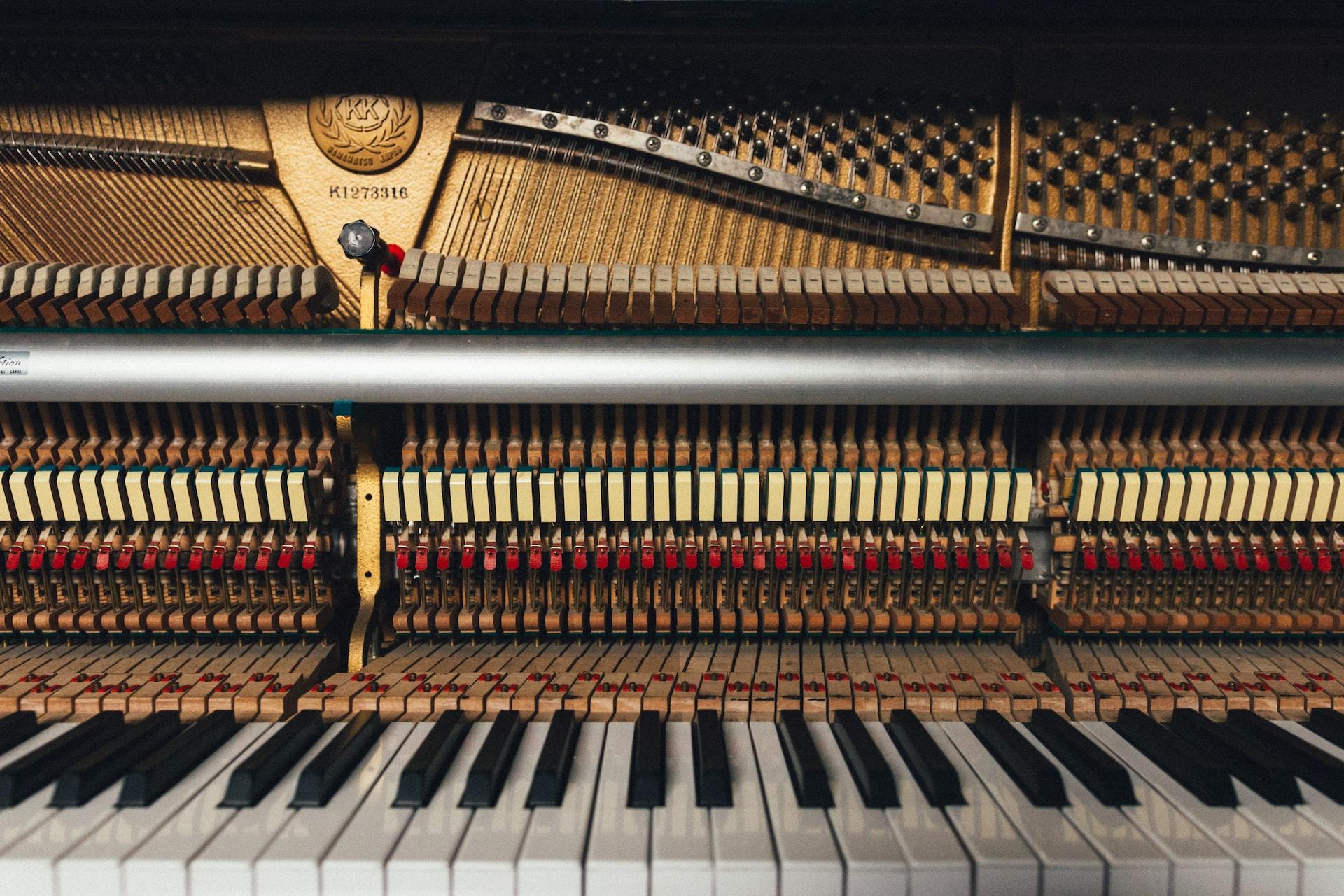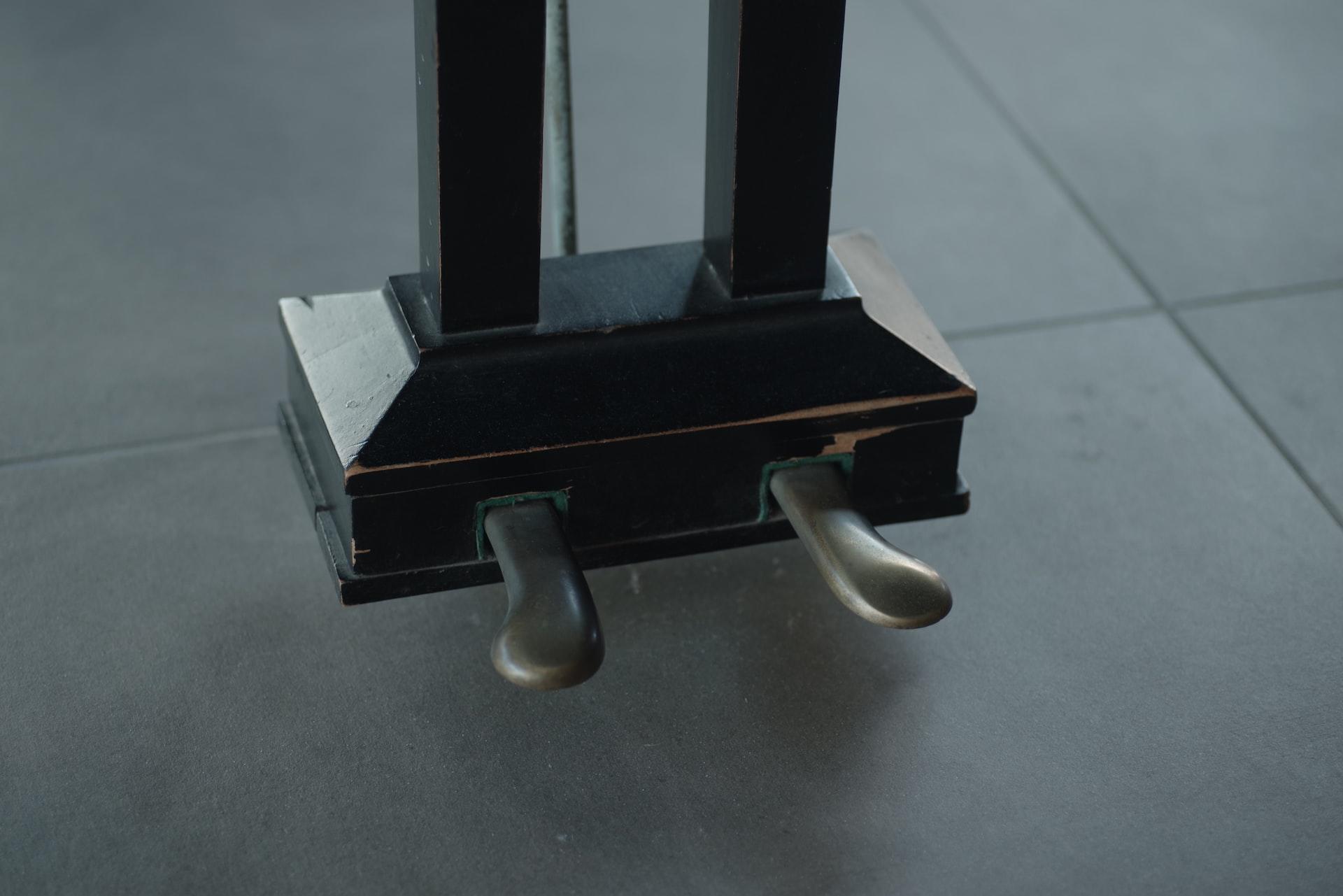You might be hard-pressed to hear a piano pedal's effects as you listen to your favourite piece. You might not even notice your favourite pianist depressing a pedal when you watch them play. But that doesn't mean there isn't any pedal work going on as the ivories tinkle.
What do piano pedals do, exactly? Why do some pianos have two while others have three and yet others have only one? Some beginner players even ask if they could get by without having to use a pedal. They might not need to ask that if they knew:
- how the pedals came about and what they're for
- how pedal usage could enhance their playing
- how to create various effects through pedalling
- how easy it is to master pedal usage
If you're an absolute beginner still perfecting your scales and arpeggios, you probably haven't had much of a chance to exercise any pedals. Should you be ready to venture beyond those basics, however, the time's about right to investigate those brass treadles. That is if you haven't played around with them already.

Understanding the Pedals
If you've ever seen any videos of jazz pianist Michel Petrucciani pounding away, you'll see a dramatic example of pedal use. Michel was born afflicted with osteogenesis imperfecta, which stunted his growth. Being short of stature didn't stop him from becoming one of the greatest jazz piano players of all time, though. His instrument featured raised pedals, which makes it easy for all to see him engaging the pedal.
It's much harder to spot standard-sized players sustaining notes. They will have learned proper form and posture early in their piano education - and you should, too. Granted, some who play with flamboyant style make great stomping moves while pedalling. That's not the example to follow.
Think of a car's acceleration pedal. Stomping it as far as it will go will only have so much of an effect, and not necessarily a good one. Good drivers apply enough pressure to get their car moving as fast as they want it to and back off as needed. Good piano players do the same with their instruments to achieve the sound they want.
Long before affixing brass treadles became the norm in piano building, those instruments featured hand stops and later, knee levers. The hand dampers were hard to engage while playing so, often, players had someone on standby to activate the dampers when needed. Knee levers were a vast improvement in piano design. Even Mozart gushed over how well they worked and how easy their use was.
You can check out amazing piano lessons here.
The Soft Pedal
The soft pedal or una corda is the left-most pedal. It was the first-ever invention to alter a piano's sound. It's designed to modify a piano's timbre and volume. Its name, una corda, describes how this mechanism works.
In the early days of piano-building, the instrument had 88 pairs of strings, two for each note. When one played a note, the hammer hit its corresponding string pair (due corda) to create the sound. If the piece called for a softer sound, the piano player would depress this pedal so that the hammer hits only the right string, thus the name una corda - one string.
In its time, una corda was quite the piano innovation because it gave players greater flexibility to change a piece's tonal quality. But soon, a revolution in piano-building made una corda all but obsolete. Triple-strung pianos became all the rage, meaning that una corda hit the middle and right strings. Today's players often don't bother with the una corda pedal because it makes little difference to the instrument's sound.
The Sostenuto Pedal
Sostenuto is Italian for 'sustained', which serves as a perfect description of what this treadle does. If your piano has this pedal, try this little exercise. Play a chord and, with your right foot, depress the sostenuto. Keeping your foot on the pedal, release the chord - do you hear it?
This feature was among the last to be added, and only reluctantly by European piano makers. In 1844, Paris hosted an Industrial Exposition which, among other innovations, featured this selectively sustaining mechanism. To say that it made a less than moderate splash would be kind. It wasn't until 30 years later that legendary piano maker Albert Steinway perfected and patented the device.
Soon, every Steinway piano came with sostenuto but European piano makers weren't compelled to embrace the concept until the early 1980s. Today, piano players everywhere rely on this mechanism to sustain a particular set of notes while their hands are busy elsewhere on the keyboard. You can hear sostenuto's effects in many compositions. Debussy's Clair de Lune and Ravel's Sonatine are just two examples of such.
The Damper Pedal
You'll use the damper the most throughout your playing, no matter which music genre you play. When pressed, this mechanism pulls all of the dampers back, allowing every string to continue vibrating until the mechanism is released. It was one of the piano's earliest innovations but didn't get much use until the Romantic music era. We needn't focus too much on it here because we'll go over its usage in the next segment.
Search for how you can take exceptional piano lessons in Derby here.

Pedalling Techniques to Learn
Many seasoned piano players will tell you that the damper is all you need. That's not exactly true because, as mentioned above, some pieces require sostenuto action. Besides, you can find many creative uses for that treadle, even if it's not written in on your sheet music. On the other hand, if your fingering and technique are well developed, you may never venture near the leftmost appendage.
That leaves us with the damper, which you should never use when learning a new piece. At first, let your fingers and ears do all the work as you get familiar with the melody and chords. You may try to figure out for yourself when to sustain and when to release the pedal.
If you drive any kind of vehicle, you already know how to position your right foot - plant your heel and angle your foot to hover just above the pedal. Sitting at the piano without playing a note, lower the ball of your foot until you can feel the pedal sinking beneath it and then, release. Practise this a few times until you get a feel for how hard you need to press down before the mechanism activates.
Once you're sure you can engage and release the pedal smoothly and quietly, you can focus on mastering direct pedalling. It entails playing the note or chord and depressing the pedal at the same time - hand down/foot down; hand up/foot up. This should create a clean, sonorous effect. You may also try half-damping by engaging the sustain just a little bit for a dreamy, hazy effect.
Get to discover the most effective piano lessons in Edinburgh here.
For legato pedalling, you should depress the pedal a fraction later than your fingers play the notes you want to sustain. Try this technique as you run through the C major scale: play C without the pedal but before the next note, engage your sustain. Play three more notes and then, quickly release and re-engage the pedal. Legato is particularly helpful if your melody calls for large leaps or if you're playing with a partner.

The Dangers of Sustain Overuse
Some piano players really like sustained sound. Others may think that if a little pedalling is good, more must be better. One might say it's a better way to ruin a piece you might otherwise have played very well. Try to think of your sustain as a Goldilocks tale: don't use too much, nor too little.
Beginner players are especially prone to releasing the pedal as soon as they've played the chord they needed to sustain. This is a case of direct pedalling taken too far. As you change chords, you'll want to sustain the sound from the just-played chord. So don't release until you're ready to play the next chord, which you may also sustain if so indicated.
Incidentally, just because your sheet music indicates a sustain doesn't mean you should automatically lower your foot. How your piano sounds depends on several factors, including the environment you're playing in. For instance, a large concert hall with strategically placed acoustic panels will make your piano sound very different from in a studio. Let your ear decide how much sustain you need, or if you need any at all.
This is by no means a complete study of how to get the most out of your piano's capabilities but it is a good start. It does give you a nice introduction to those brass accessories resting within your foot's reach, though. With this introduction, you're invited to explore your creative musicality and discover your own sound and playing style. Feel free to experiment as much as you'd like.
















